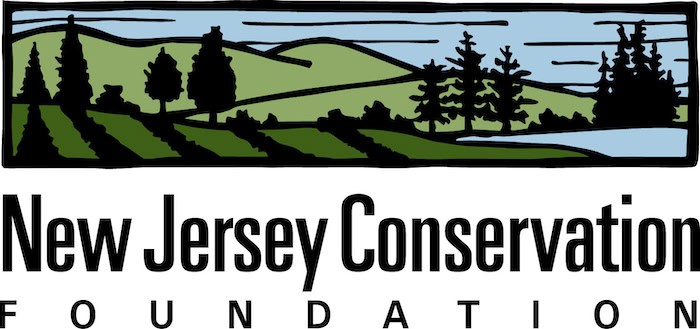By Tom Gilbert
New Jersey has always been a busy intersection – and not just where major highways cross. This state we’re in is also a major intersection for wild things. New Jersey is the northern tip of the geographic range for many “southern” species, and the southern tip for many “northern” species.
Ranges overlap here, making this small, heavily urbanized state a “sweet spot” with an amazing diversity of flora and fauna.
But as the Earth’s temperature warms due to climate change, ranges are changing and adaptable species with the ability to move easily are shifting northward, especially insects and fungi.
This comes during a time of worldwide biodiversity loss. According to the World Wildlife Fund, there has been an average 68% global decline in mammal, bird, fish, reptile and amphibian populations since 1970. In North America, the drop was 33% – less dire, but still alarming.
Most biodiversity loss in the past 50 years has been caused by habitat destruction and degradation, as the human population has tripled and the human footprint on the landscape has exploded.
Over the coming decades, Earth’s warming climate will be a major factor in biodiversity loss.
What changes might New Jerseyans see?
• Birds – If you are a birdwatcher, you probably know New Jersey is home to two chickadee species, the Northern black-capped chickadee and the Carolina chickadee, both common backyard feeder birds.
For years, the boundary between them ran roughly between Trenton and Perth Amboy. Due to warming, the line is moving northward toward Interstate 78.
Climate change is also affecting lesser-known rare birds that live deep within forests. Sensitive migrants like Golden-winged warblers, Nashville warblers and Canada warblers are summer residents in northern New Jersey’s deciduous forests, but their numbers are dropping here as populations shift northward. Tidal wetland species will be at serious risk as marshes are lost to sea level rise.
• Fish – If you fish in the ocean off New Jersey’s coast, you may have noticed changes in the fish and shellfish.
Lobster, surf clams and hake (also known as whiting) were once abundant, but now are becoming scarce because they cannot tolerate warmer water. The bulk of the populations of the three species have moved northward to the New England coast.
At the same time, black sea bass and summer flounder (also known as fluke), formerly centered off the Virginia coast, have shifted north and are more abundant than ever in New Jersey.
• Reptiles – Terrestrial, day-active reptiles like rattlesnakes and box turtles are already being impacted by climate change.
Field biologists are seeing that unusually warm winter spells are fooling reptiles into leaving their underground winter dens. When temperatures drop again, those that have ventured too far are in danger of freezing if they cannot get back.
Reptiles have little chance of using migratory corridors to adjust their geographic ranges. The biggest barrier is paved roads, which are often death-traps for creatures.
• Amphibians – One amphibian moving north is the green tree frog, a southern species that recently colonized the southern New Jersey side of the Delaware River.
But some that were already here may struggle. Rare amphibians like the blue-spotted, long-tailed, tiger and Jefferson salamanders that breed in vernal pools and springs will likely be impacted by climate change.
If we regularly see an early onslaught of summer heat, pools will dry quickly as trees leaf out. If successive broods of larvae cannot metamorphose into adults before their pools evaporate, some species may go locally extinct.
• Insects – Surveys are showing that dozens – maybe hundreds – of southern insects that are either rare or not previously found in New Jersey have become common.
Many are beneficial, like pollinating moths, but a few may increase stress on forest ecosystems, like the southern pine beetle which has caused significant damage.
• Common mammals – Many New Jerseyans will not notice the impacts of climate change on wildlife, because many of our most visible mammals – including white-tailed deer, foxes, squirrels, raccoons and coyotes – adapt easily to living around people and can prosper in any habitat.
Right now, overabundant deer are the major threat to New Jersey’s forests and biodiversity. They gobble up native plants, shrubs and tree saplings – literally clearing the way for invasive, non-native plants to thrive.
Alien plants are not preferred by deer and they do not support the native insects needed to feed a diverse bird population.
• Plants – Some 850 native plant species are already at risk. Few will be able to persist as climate change adds to existing stressors. Our natural landscape is filling with adaptable, weedy species, just as chain restaurants and box stores are homogenizing the American landscape.
Yet, because of New Jersey’s incredible investments in land preservation over the last 60 years, this state still has a chance to retain its biodiversity and sense of place.
Through the efforts of the state Green Acres program, federal land preservation programs, local governments, nonprofit land trusts, and important legislation like the state’s Wetlands, Pinelands and Highlands acts, about a third of New Jersey’s land mass is preserved.
In his book, “Half-Earth,” the recently deceased biologist E.O. Wilson called for devoting half of the Earth’s surface to nature to stave off the mass extinction of species. This goal seems even more prudent in light of the additional threats posed by climate change.
So despite New Jersey’s nation-leading success on land preservation, our work is not done. The clock is ticking on our mission to leave abundant open spaces full of diverse plant and animal species for our children and grandchildren.
Tom Gilbert is a co-executive director of the New Jersey Conservation Foundation, Far Hills. He may be reached at [email protected]

